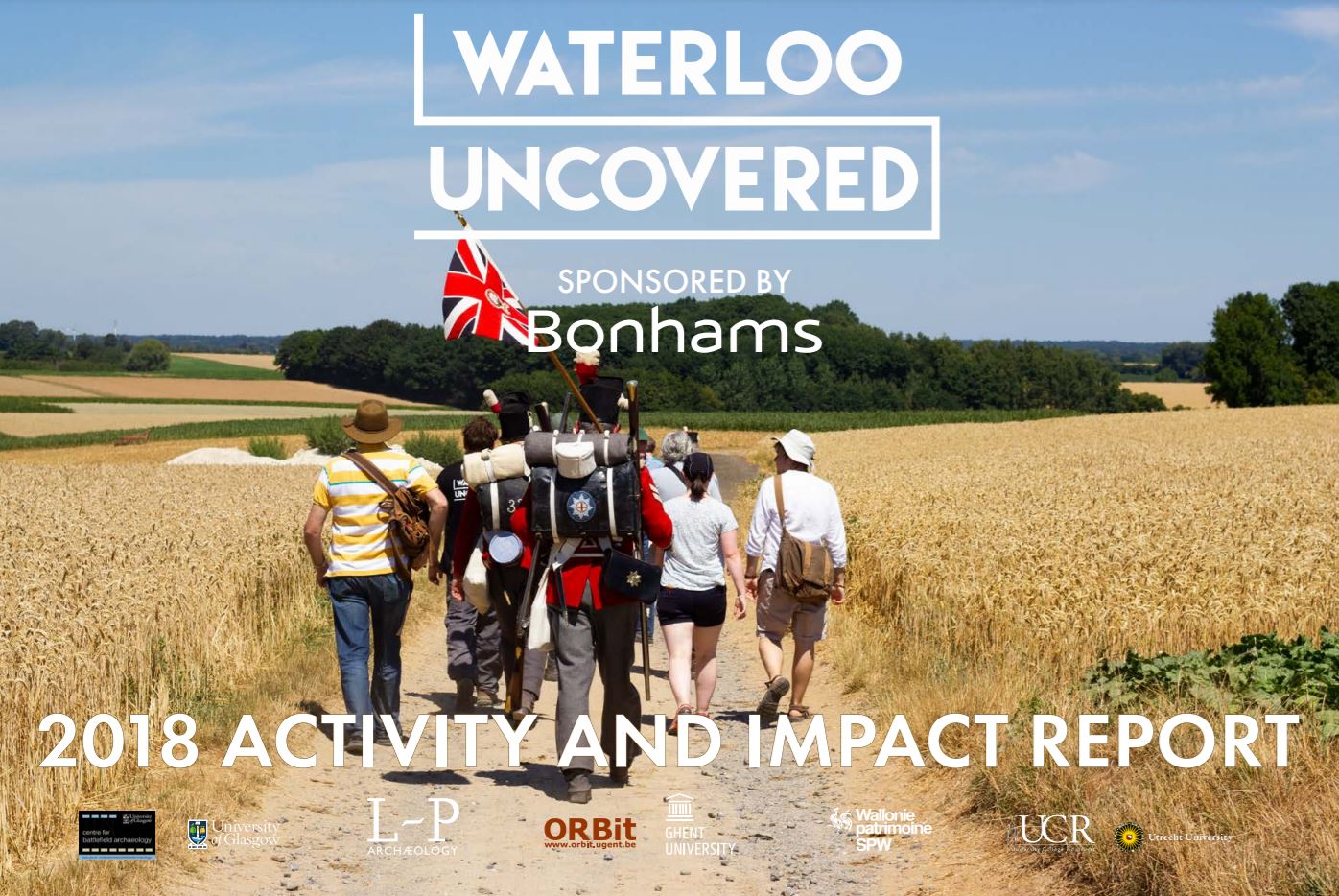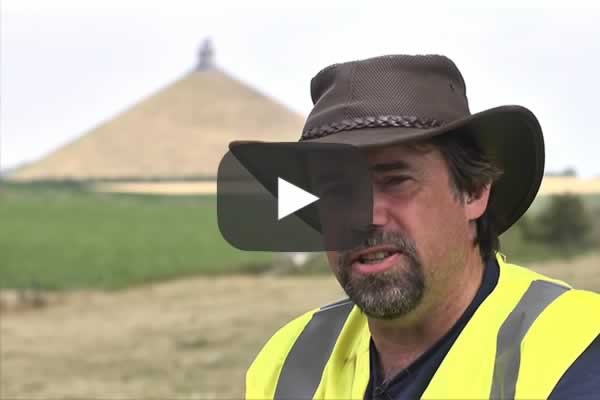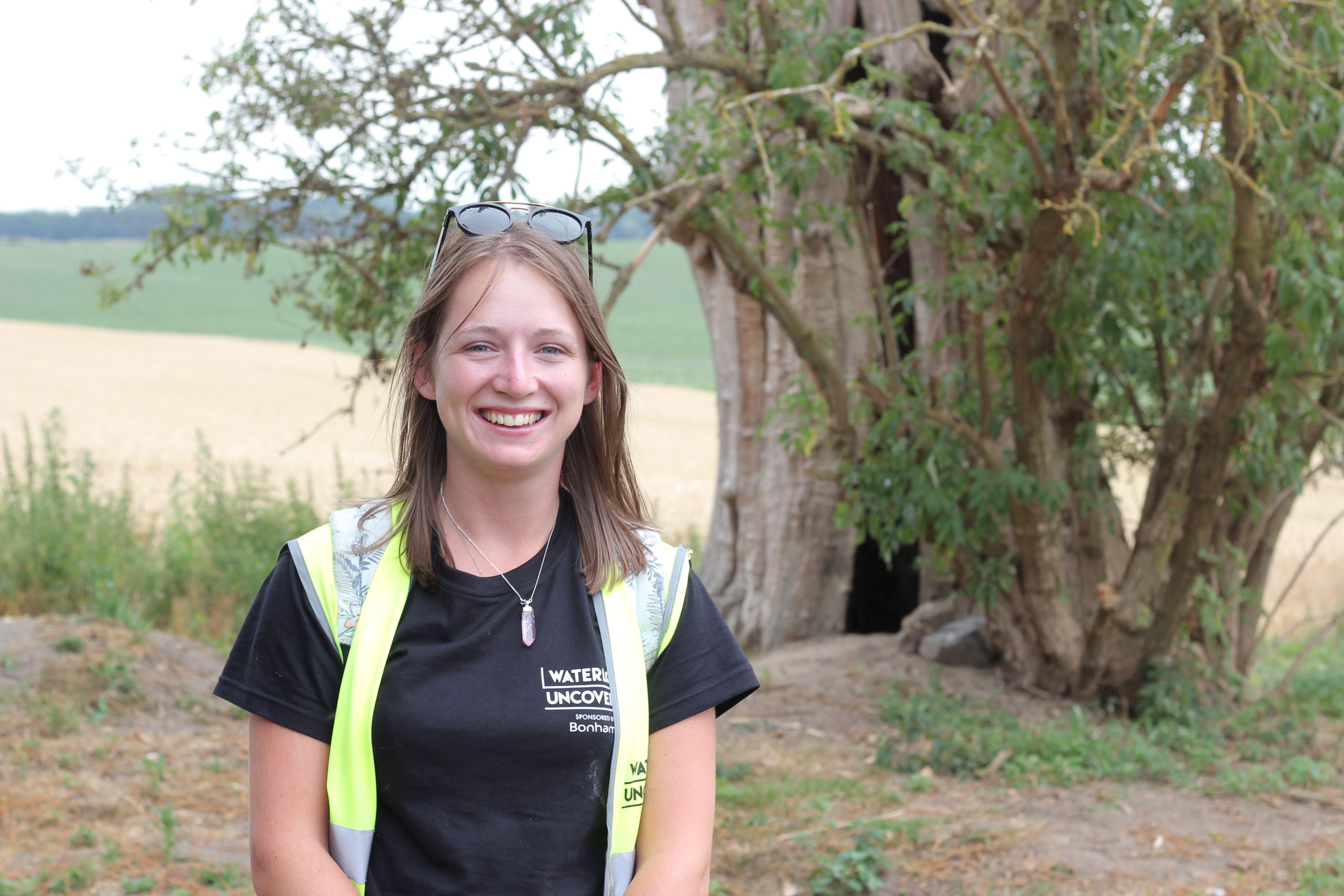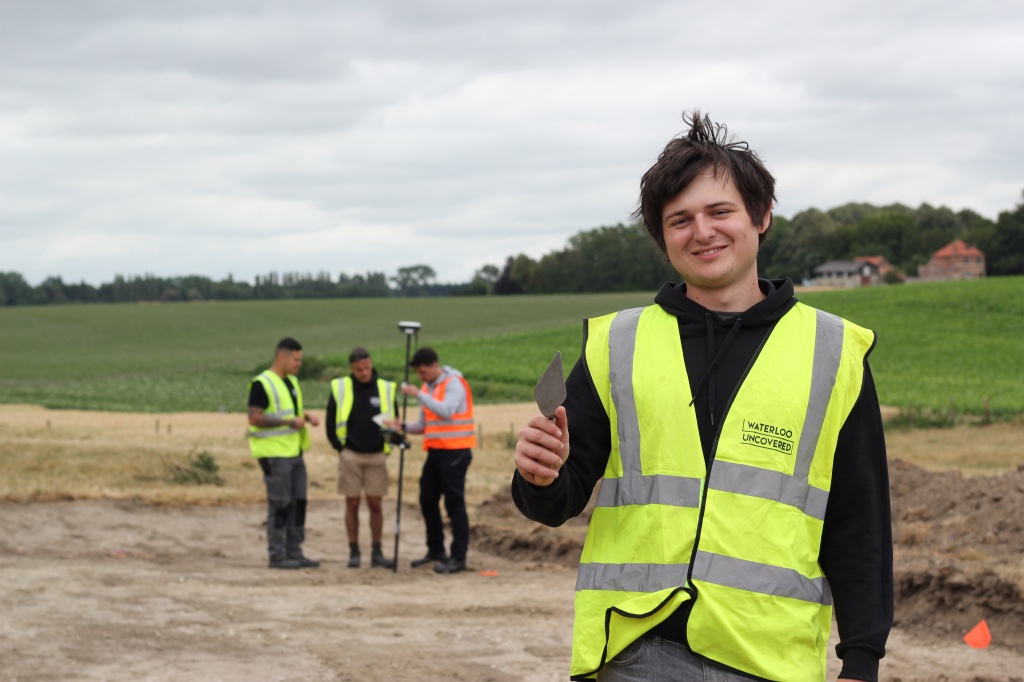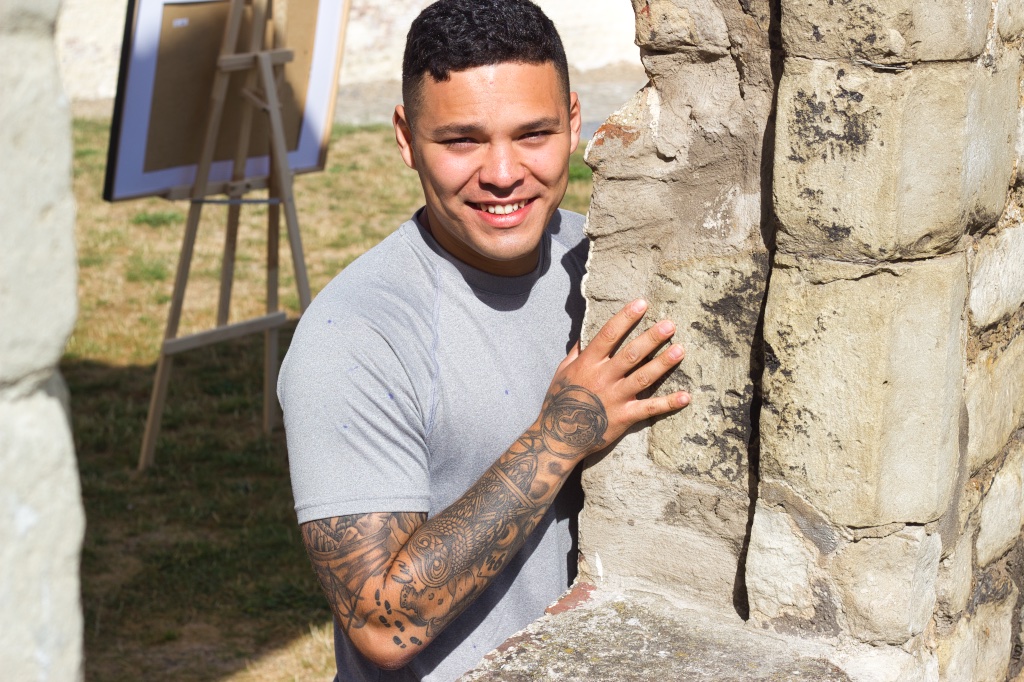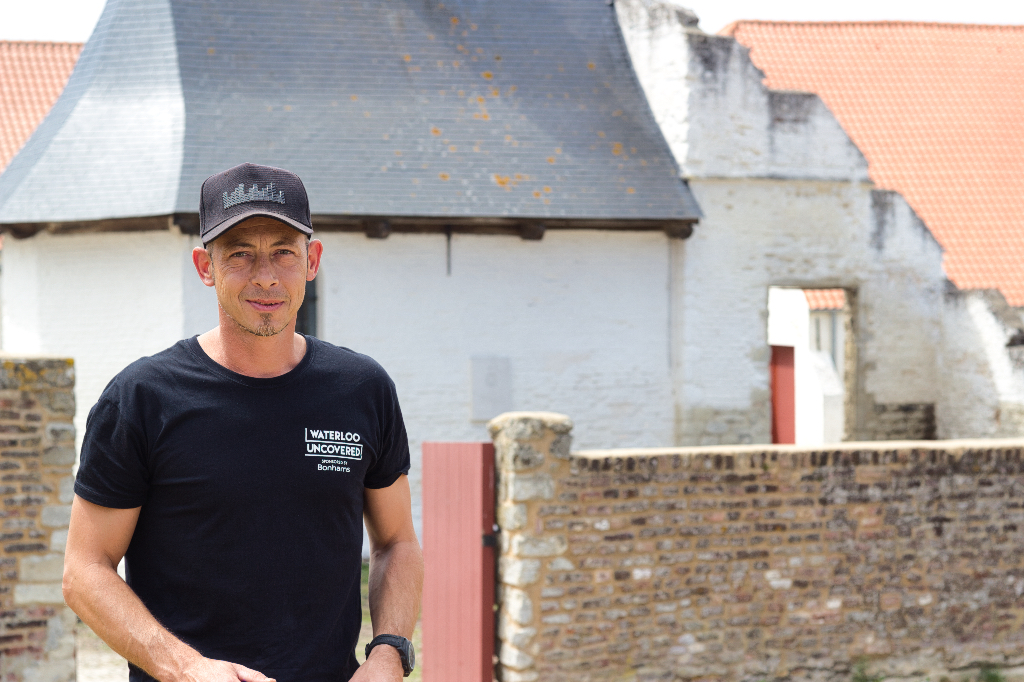Activity Report 2018
This Activity and Impact Report covers our 2018 excavations at Hougoumont, and our public engagement activities including our World Record setting wargame re-enactment of the Battle of Waterloo, the Great Game. It also details our international collaborations, education and outreach activities, fundraising events and the positive impact the programme has had on our veteran participants.
Unearthing Structures at Hougoumont
Find out what we discovered when we unearthed the remains of a building (and bones) at Hougoumont, in a summary ...
Day 0: It’s Great to Be Back!
It feels as if the Belgian sun could not wait to see us return, either. On the one hand this is great: we could not have wished for better weather to visit the Château d’Hougoumont, eat pizza in, and cruise around the fields next to La Butte de Lion (see picture). On the other hand, […]
Day 1: Breaking New Ground; and How to be an Archaeologist
The day starts off with a short debriefing. We are warned of the massive-but-noiseless cows that may suddenly appear and are easily startled. After some questionnaires we are split up into our groups for the next two weeks. We rotate to discover the six essential steps of the archaeological process. At the end of this […]
Day 2: Coins, Buttons and Promises
Whereas we felt so welcomed by the sun two days ago, today was a different story: the skies are grey and the temperature has dropped significantly. Anyone who has forgotten to bring their amazing Waterloo Uncovered-hoodie regrets their grave mistake. Sadly, no rain as of yet. Though the ground did not have a chance to […]
WU People: Keanie Trick
Keanie Trick (23) is an aircraft technician from Devon, UK. This year’s her second time on the dig. Keanie (named after actor Keanu Reeves) dreamed of a life serving in the army since she was 6 years old. At the age of 16 she enrolled and became an aircraft technician. Recently, she has come down […]
Day 3: War Letters and the Lost Pond
Today, we have been working hard to make it back home in time for the match (in case you ask: England are playing Croatia in the Semi Final of the Football World Cup). New trenches were dug, others were deepened, and in the chapel our team did their best to bring soldier’s accounts of the […]
WU People: Max Marwick
Max Marwick (22) is a student of history at Sussex University, Brighton. After the summer, he’ll start the second year of his bachelor’s degree. This year is Max’s first time on an excavation site. He feels this experience has added to his understanding of history. Whereas he usually studies from books, Max now has […]
WU People: Sylvain Robert-Malbete
Sylvain Robert-Malbete (23) is a Coldstream Guardsman from London. He is learning more about metal detecting and Napoleonic history while excavating in the Car Park. Back in England, Sylvain is part of the Coldstream Guards’ First Battalion. His right arm is covered in a Harry Potter-themed tattoo sleeve. He tells me that his House is […]
Day 4: An Extraordinary Coincidence and the Renovation Excavation
We are starting to understand what happened inside the Northern Gate. Unfortunately, sometimes we are getting a better picture of what happened in that place around 2015 – not 1815. Tomorrow, we will dig to a deeper layer. One of our team members did find an ‘antique’ medicine bottle from the early 20th century, which […]
WU People: Hans Droppert
Hans Droppert (63) is a veteran of the Dutch Royal Navy Reserve from Heinkenszand (NL). He has been cleaning and organising finds fresh out of the trenches. Hans plans on sharing some of the stories of his fellow veterans in Dutch classrooms. These experiences are part of his project ‘Veteran in the Classroom’ (Veteraan in […]
Dig Diary 5: Finding the Foundation and Getting Creative
It’s Friday Finds Day! Check our Facebook, Instagram and Twitter posts to see the highlights of this week. We’ve had success at the Garden Wall excavations – read the full story below! Joining us on site are two artists and an author. They are walking around, soaking up information from the dig, and our team has been joining […]
WU People: Sebastiaan Loche
WU People: Sebastiaan Loche Sebastiaan Loche (43) from Zwolle in the Netherlands, is a veteran serving in the Dutch armed forces. He is part of a growing team of Dutch veterans taking part in Waterloo Uncovered. Their involvement reflects the increasing interest in battlefield archaeology in the Netherlands, and a curiosity to find out more […]
Dig Diary Weekend: The Past Come Back to Life
Waterloo Uncovered Archaeology Weekend An important part of our work is to tell people about what we do. This year, for the first time, we held an Archaeology Open Weekend, aimed at the local community and those interested in finding out more about what we have uncovered on site. Crowds of people came to visit […]
Dig Diary 6: Breaking New Ground
It’s Monday. The week has started again, and we are excited to be back digging. Today, there’s more evidence for how archaeology creates as many new questions as answers. Keep reading to see what we’ve found! The cover-up Some trenches have been covered over again as our work there is concluded -for now. The […]
Dig Diary 7: Blazing Heat and Mystery Button
We’re getting a much clearer sense of the physical features of the battle landscape. In today’s dig diary we’re going to look at work on the wall, the search for a hedge, and more news from the North Gate. Blazing Heat Working in the summer heat has not been easy, but it has been rewarding. […]
WU People: Sam Wilson
Sam Alexander Wilson (30) is a professional archaeologist from Basingstoke. He’s been part of the Waterloo Uncovered team right from the start, and has seen how much impact it can make a person -for the good. For Sam, it’s his fourth year on the dig as a supervisor. This year has been quite a different experience. […]
Dig Diary 8: New Trenches, Ancient Artefacts
Day 8 has been an exciting day with two new trenches dug in promising places! At the end of the Dig Diary, we will give you an insight into two more highlighted finds of the week. The end of the project is approaching rapidly. On Thursday, we will have completed most of our excavations, and on Friday, […]
Descendants: Battlefield Tour
At Waterloo Uncovered, we often get visitors whose ancestors fought in the battle. Last Friday, we were visited by a group who toured the battlefield and came to see us at our dig at Hougoumont. Here are their stories: Francis Seymour is a descendant of Captain Horace Beauchamp Seymour, who was on Lord Uxbridge’s staff. […]
Descendants: Julian and Ben Parker
Julian and Ben Parker, a father and son duo on site have a very tangible link to the battle of Waterloo. Julian, an ex army captain grew up in the military, as his dad was a Colonel in the army as well. Ans it turned out, there were more military men in the family’s history. […]
The Last Dig Diary of 2018
It has been wonderful to be on site and to be part of this amazing community. Who knew that such a diverse group of strangers could become so close in only two (intense) weeks? Thank you for reading, following, liking and sharing us! The Chestnut Deception Did we find out what caused the geophysical […]
An Evening with Waterloo Uncovered
An evening of entertainment at The Royal Hospital Chelsea, and chance to support Waterloo Uncovered. 6th November 2018. 18.30 to 20.30.
Waterloo Uncovered at Chalke Valley History Festival
This year, Waterloo Uncovered and a team volunteers from UCL will, once again be at Chalke Valley History Festival. This year, we’re doing something slightly different, we’re looking at the Women of Waterloo. Find out more about the project below. We will have an array of finds on display from our last four years of […]

